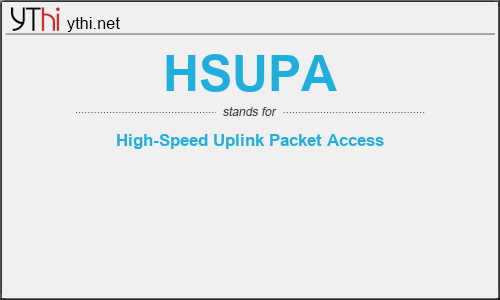What does HSUPA mean? What is the full form of HSUPA?
The full form of HSUPA is High-Speed Uplink Packet Access. It’s used on Technology ,Communication in Worldwide
High-Speed Uplink Packet Access (HSUPA), also known as 3.75 G (3.75 generation of wireless telecommunication technology) is a 3G mobile telephony protocol with up-link speeds up to 5.76 Mbit/s. The name HSUPA was given by Nokia, however 3rd Generation Partnership Project(3GPP) calls it as Enhanced Uplink (EUL).
The first HSPA specifications supported increased peak data rates of up to 14 Mbit/s in the downlink and 5.76 Mbit/s in the uplink. It also reduced latency and provided up to five times more system capacity in the downlink and up to twice as much system capacity in the uplink compared with original WCDMA protocol.
High Speed Downlink Packet Access (HSDPA) is an enhanced 3G (third-generation) mobile communications protocol in the High-Speed Packet Access (HSPA) family. HSDPA is also known as 3.5G, 3G+, or Turbo 3G. It allows networks based on the Universal Mobile Telecommunications System (UMTS) to have higher data speeds and capacity. HSDPA was introduced with 3GPP Release 5, which also accompanied an improvement on the uplink providing a new bearer of 384 kbit/s. The previous maximum bearer was 128 kbit/s. HSDPA also decreases latency and therefore the round trip time for applications. Evolved High Speed Packet Access (HSPA+), which was introduced in 3GPP Release 7, further increased data rates by adding 64QAM modulation, MIMO, and Dual-Carrier HSDPA operation. Even higher speeds of up to 337.5 Mbit/s are possible under 3GPP Release 11

HSUPA
means
High-Speed Uplink Packet Access![]()
Translate High-Speed Uplink Packet Access to other language.


Leave a Reply
You must be logged in to post a comment.